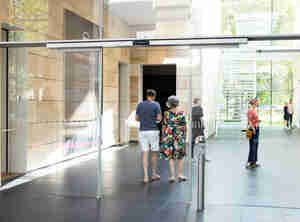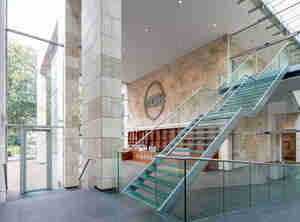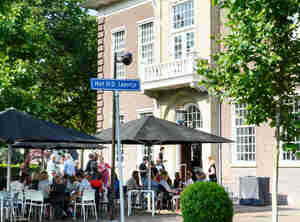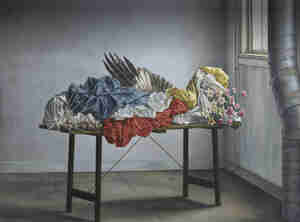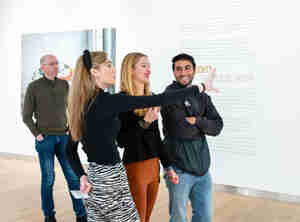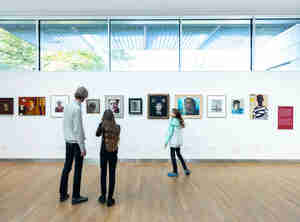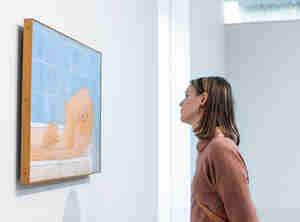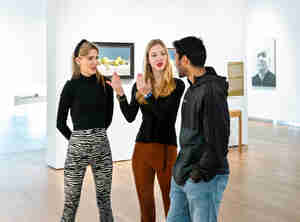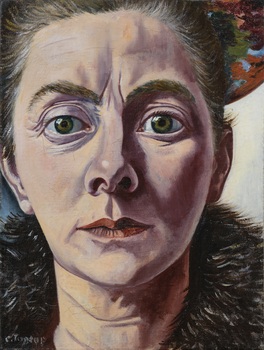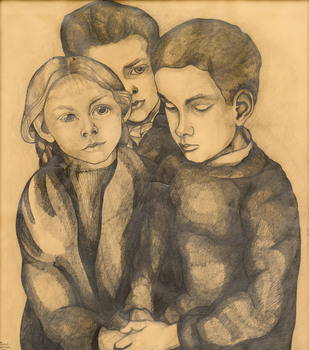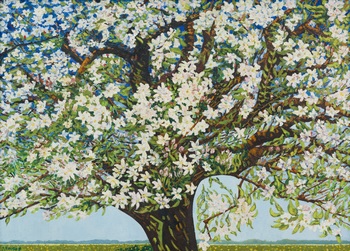- Plan your visit
- See and do
- Collection
- About us

Go back
Charley Toorop
Roses in a Glass, 1946
In many ways Charley Toorop (1891-1955) was a remarkable artist with a style all her own. She worked in an expressive-realistic manner throughout her life. Moreover, her famous father and the fact that she was a woman granted her a special position in the otherwise male-dominated art world.
She wa
...
s inspired by Wassily Kandinsky (1866-1944), the German Expressionists and the post-Cubist realism of Pablo Picasso (1881-1973) and the lesser-known French artist Auguste Herbin (1882-1960), among others.
In this still life, Toorop makes it clear that the imitation of reality was of secondary importance to her: she was looking for a personal symbolism. She deliberately sowed confusion with her division of the surface, full of triangular shapes and lines. There also seems to be no distinction between inside and outside. On the left, bits of blue sky peep through between the branches of a tree, the glass with roses seems to be in an inner space. Correct perspectives or shadow and light effects were not a goal in themselves for Toorop. She had a ‘hard’ modelling style, and her facture was coarser and lumpier than that of the painters with whom she is often mentioned in the same breath.
Text: Myrthe Wesseling, guide and museum host
Artist
Charley Toorop
Title
Roses in a Glass
Year
1946
Technique
Oil on panel
Size
63.5 x 43 cm (h x w)
Type of object
Painting
Copyright
© Pictoright
This work is protected by copyright. You need permission from the creator or his heir to download, edit, copy or publish it.
